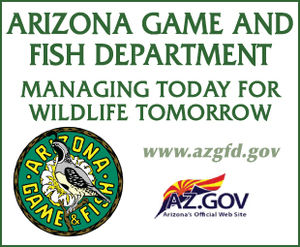Be Water-Safe - It's Summer Swim Time
Swimming classes are available for all ages from infants to older adults
July 1, 2015
It's summer in the Southwest, and there's no stronger call than that of water for all of us to cool off. Whether boating, fishing, water skiing, wake boarding, swimming, or participating in any activity on or near the water, being able to swim is vitally important. Enter swim lessons.
As we all know, swimming lessons constitute the process of learning to swim. In most countries there is a definition of a number of swimming levels that is reached in the process of the curriculum. The respective certificates of swimming tests are required for further training in aquatic abilities.
Many countries have defined a minimum swimming level that children should reach by the end of primary education, in most cases with the help of school swimming classes' being part of the normal curriculum.
Children are often given swimming lessons, which serve to develop swimming technique and confidence. Children were traditionally viewed not to be able to swim independently until 4 years of age, but infant swimming lessons are now recommended to prevent drowning.
Recommendations From CDPC, AAOP
The Centers for Disease Prevention and Control (CDPC) recommend swimming lessons for children from 1-4, along with other precautionary measures to prevent drowning.In 2010, the American Academy of Pediatrics (AAOP) reversed its previous position in which it had disapproved of lessons before age 4, indicating that the evidence no longer supported an advisory against early swimming lessons.
There is an essential difference between the new infant swimming lessons and the traditional parent-child water-play sessions. Infant swimming lessons, sometimes called infant swim recovery, teach infants and toddlers how to recover from an accidental fall into a body of water. Unlike traditional parent/toddler classes, which encourage the child's face in the water through blowing bubbles, infant swimming lessons instill in the child the skills to regain buoyancy from a submerged state and to tilt the head back, getting it out of the water to take breaths and call for help.
Swimming lessons reduce the risk of drowning by 88 percent for babies and children up to 4 years old.
American Red Cross Levels
In the United States, most swimming schools use the swimming levels "Learn To Swim" as defined by the American Red Cross.
• Level 1: Introduction to Water Skills
The student needs to get comfortable with water: This includes kicking, bobbing, underwater exploration, front and back floating and gliding with face in the water, open eyes under water.
• Level 2: Fundamental Aquatic Skills
The student needs to swim 15 feet on front and back, submerge entire head, submerge and retrieve an object.
• Level 3: Stroke Development Skills
The student needs to swim 15 yards on front, back and crawl, also jump into deep water from side.
• Level 4: Stroke Improvement
Includes front and back crawl of 25 yards, butterfly and breaststroke of 15 yards, allowing for turns while swimming.
• Level 5: Stroke Refinement
All strokes should be shown at 25 yards, allow for flip turn, includes swimming underwater for 15 yards.
• Level 6: Skill Proficiency
The swimming test includes swimming continuously of 500 yards, including back and front crawl at 100 yards, plus 50 yards for each of butterfly, backstroke, breaststroke and sidestroke. On top of this common swimming proficiency there are four swimming test variants for the Level 6 certificate: (A) Diving Basics - show a jump from the diving board; (B) Fitness Swimmer - demonstrate the use of training gear; (C) Lifeguard Readiness - submerge to deep water (minimum 7 feet); (D) Personal Water Safety - life jacket and boating rules.
Lifeguard certificates are obtained directly in courses of the American Red Cross. The course length varies with 30 to 37 hours for the four options of Pool Lifeguarding, Waterfront Lifeguarding, Waterpark Lifeguarding and Shallow Water Attendant.
Examples Of Red Cross Courses
The American Red Cross endorses swimming and water-safety courses for all ages, including from six months to four and five years, and over six years all the way up to adults of any age. Some of their courses include the following:

D.J.P.
NEVER TOO EARLY – This mother and her 10-month old son have begun together the vital preparation for water safety. In 2010, the American Academy of Pediatrics (AAOP) reversed its previous position in which it had disapproved of lessons before age 4, indicating that the evidence no longer supported an advisory against early swimming lessons and instead, endorsed infant swim lessons. Swimming lessons reduce the risk of drowning by 88 percent for babies and children up to 4 years old.
• Learn to Swim Course
• Preschool Aquatics
• Parent and Child Aquatics
• Home Pool Essentials
• Safety Training for Swim Coaches & Instructors
• Red Cross Learn-to-Swim Providers
For more information and to find courses in your area, visit http://www.redcross.org/take-a-class/program-highlights/swimming.
A Guide To Phoenix-Area Swim Programs
In the magazine Raising Arizona Kids, there is a valuable article titled "Splash, Play, Float, or Swim. Race, Dive or Synchronize!" It lists water programs that meet every need in an updated guide to the Valley of the Sun's aquatic programs. An Editor's Note states, " Information is provided by swim programs based on questionnaires sent out by our editorial staff. Raising Arizona Kids does not independently evaluate or endorse specific programs. Always make sure that your children are supervised around water.
This article may be viewed at https://www.raisingarizonakids.com/swim-programs-arizona/














Reader Comments(0)